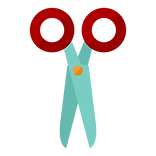My Pedagogy: Before & After
Before
My M.Ed.
Pedagogy
I believe in creating a positive, engaging, and organized community in my classroom. I use multiple learning styles throughout all of my lessons to accomodate all students:
-Visual: diagrams, graphic organizers, videos
-Auditory: Reading- read alouds & Speaking- student-centered discussions
-Kinesthetic: hands-on activities and experiments
As of right now my focus is always on planning lessons that contain all of the major components from beginning to end. Setting up procedures that teach my students to focus and train their minds to continue adding to their files of knowledge from class to class. This includes starting with a warmup question reiterating a topic from the previous class, opening with an engaging hook, incorporating different activities in lessons instead of lecture, then following up with assessments to gauge their knowledge thus far.
I want to create an integrated science and literacy curriculum for my middle school scientists. I plan to find ways to incorporate literacy into my lessons as a major focus throughout the science curriculum. I would like to use reading, writing, and discussion strategies to teach science texts, vocabulary, and major concepts in each unit.
After
My M.Ed.
Pedagogy
I knew going into this Master's program that I wanted to strengthen my knowledge of literacy for my middle school science curriculum, but I had no idea how much I would grow in my technological and digital knowledge. These 12 courses helped change the way I look for both research and resources to benefit my students and improve myself as an educator. I have implemented so many activities and ideas from my courses into my own classroom. These include the use of appropriate leveled texts from different online sites and using new types of texts like graphic novels (Max Axiom by Donald Lemke) and young adult novels (Every Soul a Star by Wendy Mass). In terms of digital resources I have begun to use Nearpod instead of Powerpoint, KaHoot instead of Jeopardy, and online critical thinking games instead of word puzzles on paper.
Having this knew knowledge about different types of reading materials really helps me to mix up what we read in the science classroom. Instead of reading just articles I have also incorporating Reader's Theater and multimodal texts. No matter what new type of text I show them I focus on bringing together meaning from previous lessons to make connections in our learning. I even plan to do so on our field trip next week to Washington, D.C. by incorporating information literacy while traveling through the museums!
Most recently I have introduced my coworkers to KaHoot and we have been sharing and working together on KaHoot games to informally assess our students. I also have decided to use Plickers in my classroom for quick informal assessments. A classmate in the program recommended it to me a few weeks ago, I ordered them, and now have a new solution for my ticket out the door problem.
Honestly a year ago if you would have told me that I would love using computers in my classroom I wouldn't have believed you. The idea of it was so intimidating, but these classes gave me the confidence and knowledge to do it on my own. Overall this degree has helped me become more open-minded about out of the box ideas related to literacy. This includes the different types of texts I have used in my classroom. I would have never considered graphic novels or young adult fiction in a science class before. I was only looking at nonfiction works like articles and textbooks. As our technology advances and our curriculums change I will be keeping an eye out for the newest tools and strategies to stay up to date for my students' futures.






